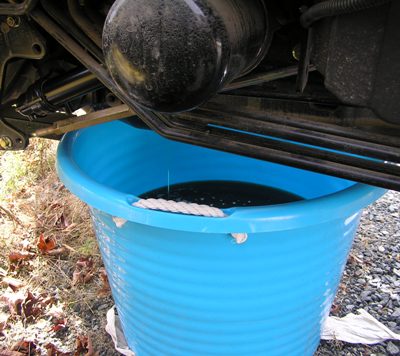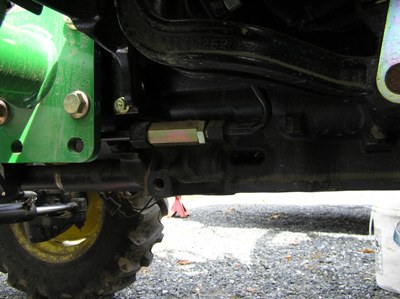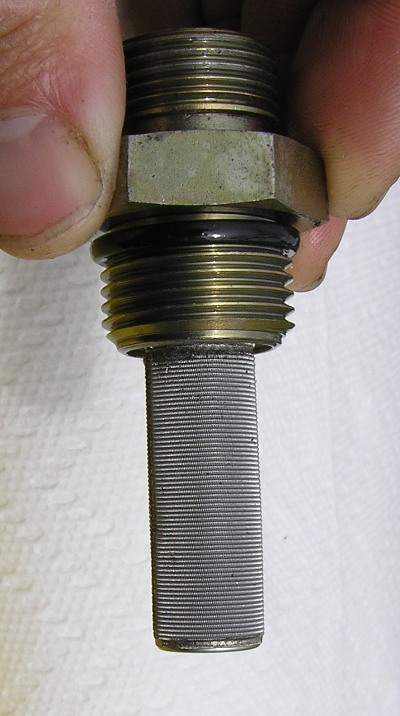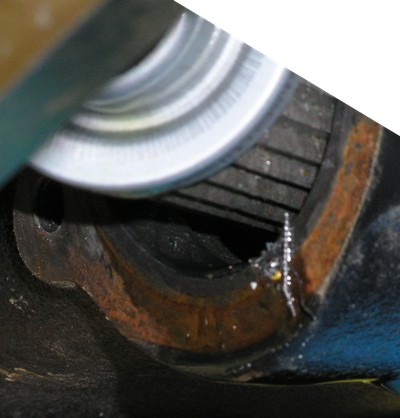Changing the oil in my tractor's transmission
I am changing the oil a little early because I have noticed the power steering has not been as responsive as I want it to be. On my tractor, the steering is provided by a complex set of valves attached to the steering wheel supplying hydraulic pressure to a cylinder that changes the direction of the tires. Think of it that as the steering wheel turns it "pumps" the hydraulic fluid to push the tires to a new orientation. This activity is dependant on the high pressure hydraulic flow from the tractor engine. Without the hydraulic pressure, it is very difficult to effect a turn. Lately I have been noticing a hesitation in my steering in certain conditions. After ruling out some other possibilities I got to the point of ensuring proper hydraulic oil supply to the pump. It could be a blocked filter or pickup screen. To remove and clean the pickup screen, the entire hydraulic sump needs to be drained.
The sump holds about 9.6 gallons of hydraulic oil according to the manual. It took a long time for it to drain. I had warmed up the tractor to make the fluid less viscous. I opened the fill cap to prevent suction from building up. It still took more than ten minutes for a 1/2 inch stream of oil to drain out. Time for me to go back to the barn, get other tools and get set up for the next step.
As long as I am draining the oil, I am far enough along in this maintenance period that I am doing the scheduled transmission maintenance. Since I was already cleaning the pickup screen and changing the filter, all I had to do in addition was clean the inline screen and change the oil. The inline the screen is that brass colored object amidst the black. It's not nearly as big as the pickup screen. From the pluming it looks like it screens the oil as it returns from the oil intercooler up near the radiator.
That's the inline screen disassembled. Pretty clean. That's good, because any contamination that gets this far has traveled through the high pressure side of the hydraulics. Anything other than hydraulic oil oil in there causes damage.
This is the pickup screen as I pulled it out. It is basically a tube with many 1/8 inch holes covered with a corrugated fine mesh screen. The pickup screens job is to catch large particles before they get to the pumps and the high pressure side.
That corkscrew of metal is a chip left from manufacture. There are a lot of gears and other machined parts inside the transmission and some of the machining may occur after it is assembled which are a source of chips.

This is the pickup screen as I pulled it out of the transmission. There was a small amount of chips and other detritus on the screen, but I would be surprised if it was significantly blocked. I cleaned it, replaced it in the transmission, changed the filter and re-assembled the plumbing. This wasn't a difficult project. It did involve some large wrenches and more force than I am generally accustomed to. And problem solving. The manual described this maintenance procedure in a fourteen point procedure. I think it took me three hours to finish that procedure.
There's been no recurrence of the steering issue or leaks in the hydraulics. I might not be fast, but I am finished.







1 Comments:
I was meaning to ask what the big oil filter in the parking area was from.
By Wanna BEE farmer, at 11:47 AM
Wanna BEE farmer, at 11:47 AM
Post a Comment
<< Home